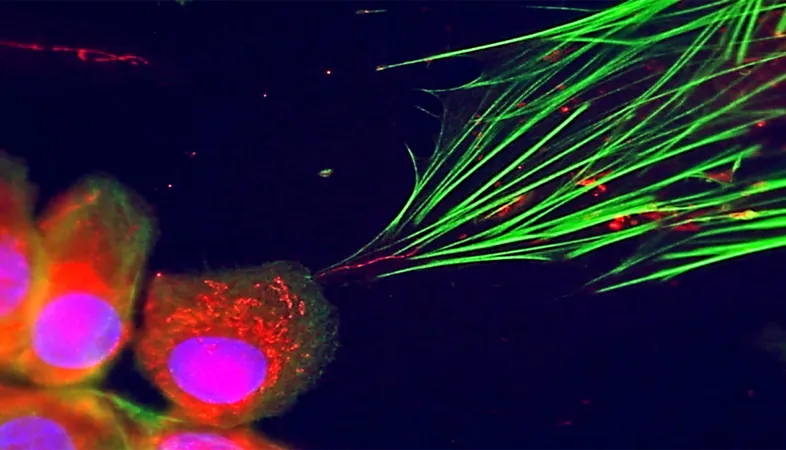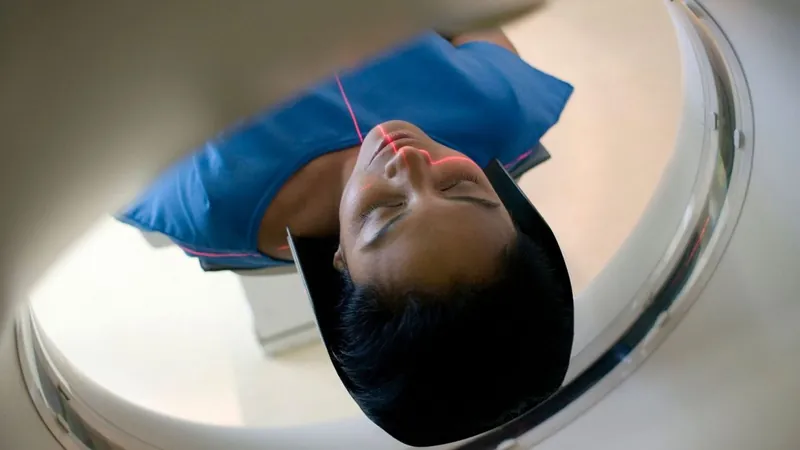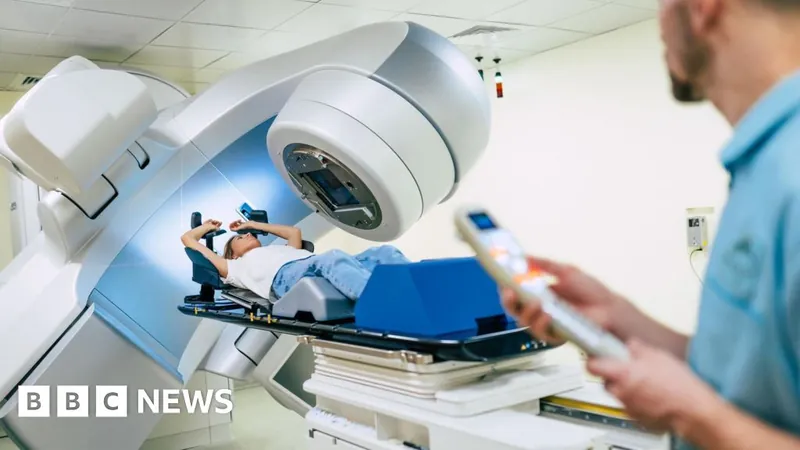
Cancer Cells' Sneaky Power Grab: How They Hijack Healthy Cells
2025-09-10
Author: Nur
A Shocking Discovery in Cancer Research
Researchers have unveiled a jaw-dropping tactic employed by cancer cells: they literally recruit healthy neighboring cells to assist in their survival and proliferation. This revelation, led by cell biology expert Professor Sabine Werner at ETH Zurich, highlights a fascinating yet sinister interplay in the microenvironment of tumors.
Mitochondria: The Energy Bombs of Cancer
In an eye-opening study published in the journal *Nature Cancer*, scientists revealed that skin cancer cells are capable of transferring their energy-producing organelles, mitochondria, to nearby healthy fibroblast cells. This is accomplished through tiny tubes resembling a pneumatic tube system, allowing cancer cells to effectively commandeer the resources of their unsuspecting neighbors.
Turning Allies into Enemies
Once the mitochondria hitch a ride into fibroblasts, these healthy cells undergo a transformation, becoming tumor-associated fibroblasts. This metamorphosis not only speeds up their growth but also enables them to churn out increased levels of adenosine triphosphate (ATP) and growth factors that further bolster cancer cell proliferation. In essence, these hijacked fibroblasts unwittingly pave the way for more aggressive tumors.
The Serendipitous Find
This breakthrough originated from a serendipitous observation made by former postdoctoral researcher Michael Cangkrama, who spotted these tube-like structures between skin cancer cells and fibroblasts in a laboratory dish. While the concept of mitochondrial exchange is not new, this was the first time it was noted that cancer cells could pass these vital components to healthy connective tissue cells.
A Broader Implication Across Cancer Types
Interestingly, further investigations by the ETH Zurich team indicate that mitochondrial transfer might also be a critical mechanism in other cancers, such as breast and pancreatic cancer, where the proliferation of fibroblasts is already a significant factor.
Unmasking the Protein Culprit: MIRO2
The research uncovered that a specific protein, MIRO2, plays a pivotal role in the mitochondrial transfer process. This protein is produced in abundance within cancer cells that are actively transporting mitochondria, making it a potential target for disrupting this malignant strategy.
Towards Future Treatments
Promisingly, when researchers inhibited MIRO2 in laboratory settings and mouse models, mitochondrial transfer halted, preventing the fibroblasts from morphing into tumor-promoting agents. While this breakthrough opens the door to potential clinical applications, the journey to discover a safe inhibitor for MIRO2 in human tissue remains just beginning.
The findings lay the groundwork for innovative cancer therapies aimed at stalling tumor growth, although developing effective treatments may take years. Stay tuned for what could be the next frontier in battling cancer!




 Brasil (PT)
Brasil (PT)
 Canada (EN)
Canada (EN)
 Chile (ES)
Chile (ES)
 Česko (CS)
Česko (CS)
 대한민국 (KO)
대한민국 (KO)
 España (ES)
España (ES)
 France (FR)
France (FR)
 Hong Kong (EN)
Hong Kong (EN)
 Italia (IT)
Italia (IT)
 日本 (JA)
日本 (JA)
 Magyarország (HU)
Magyarország (HU)
 Norge (NO)
Norge (NO)
 Polska (PL)
Polska (PL)
 Schweiz (DE)
Schweiz (DE)
 Singapore (EN)
Singapore (EN)
 Sverige (SV)
Sverige (SV)
 Suomi (FI)
Suomi (FI)
 Türkiye (TR)
Türkiye (TR)
 الإمارات العربية المتحدة (AR)
الإمارات العربية المتحدة (AR)